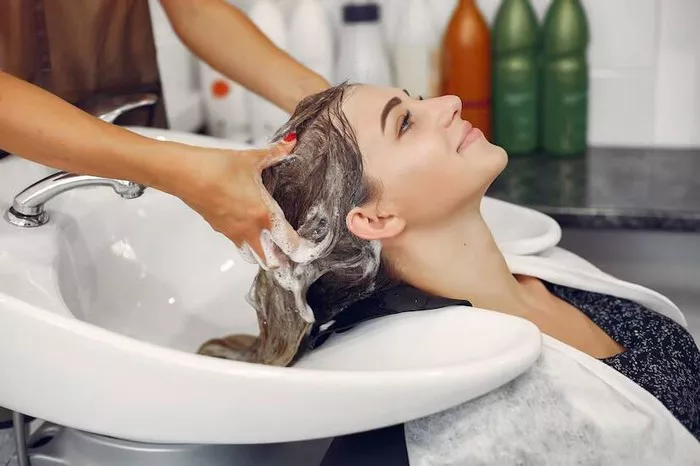Frizzy hair is a common challenge, especially during winter when the air is cold and dry. This lack of moisture in the environment leads to increased static electricity and dehydration of the hair shaft, causing hair to puff out and appear unmanageable. If you’ve ever felt like your hair has a mind of its own during the colder months, you’re not alone. Understanding why hair becomes frizzy in winter is the first step toward treating and preventing it effectively.
What Causes Frizzy Hair in Winter?
The primary causes of frizz during the winter season include:
- Dry air: Cold temperatures outdoors and indoor heating systems strip moisture from the hair.
- Wool and synthetic fabrics: Hats and scarves can create friction, increasing frizz.
- Over-washing: Washing hair too often in winter can strip it of its natural oils.
- Improper drying techniques: Rubbing hair with a towel or using high heat can lead to more breakage and frizz.
How to Control Frizzy Hair in Winter
To combat winter frizz effectively, it’s important to adjust your routine. Below are the key hair care strategies to keep frizz at bay during the colder months:
1. Hydrate Your Hair
Just like your skin, your hair needs hydration to stay healthy. Use a moisturizing shampoo and conditioner specifically formulated for dry or frizzy hair. Look for ingredients such as argan oil, shea butter, and glycerin, which help lock in moisture and prevent dehydration.
2. Reduce Washing Frequency
In winter, limit hair washing to 2–3 times a week. This helps preserve your scalp’s natural oils that protect and nourish your hair. Over-washing can strip these oils, making hair more prone to frizz and breakage.
3. Use a Leave-in Conditioner
Leave-in conditioners provide an extra layer of moisture and protection. They also help detangle and smooth the hair shaft, reducing the chance of frizz forming as you go about your day.
Protective Styling and Tools
4. Choose Frizz-Control Hair Tools
Invest in a high-quality ionic hair dryer that helps close the hair cuticle and reduce static. Avoid plastic combs and brushes; instead, use those made from natural fibers or wood to reduce static build-up.
5. Sleep Smart
Switch to a silk or satin pillowcase to reduce friction while you sleep. This simple change can make a noticeable difference in your hair’s smoothness and shine.
6. Embrace Protective Hairstyles
Protective styles like braids, buns, and twists reduce exposure to the harsh elements and minimize manipulation that leads to frizz. These styles help retain moisture and reduce the frequency of styling.
Winter Hair Care Products That Work
When it comes to frizz-fighting products, less is often more. Choose lightweight serums or creams that won’t weigh your hair down. Look for products that offer both moisture and humidity protection. Some beneficial ingredients to watch for include:
- Jojoba oil
- Silicone blends (in moderation)
- Vitamin E
- Keratin and protein treatments
Deep Conditioning is Non-Negotiable
Incorporate a deep conditioning treatment at least once a week. These treatments replenish lost moisture, repair damage, and create a protective barrier on the hair shaft to fend off winter dryness. If your hair is very dry or chemically treated, increase this to twice a week for better results.
Preventive Measures Against Frizz
Prevention is key. Before heading outdoors, apply a light serum or oil to seal your hair’s cuticle. This helps protect against cold winds and sudden changes in temperature. Additionally, never leave the house with wet hair in winter, as cold air can make your hair brittle and prone to breakage.
Watch Your Diet and Hydration
Your internal health affects your hair’s appearance. Ensure you are consuming a balanced diet rich in omega-3 fatty acids, vitamins A, C, and E, and staying hydrated. Drinking plenty of water helps maintain moisture balance in your scalp and hair, even in dry climates.
Understanding the Importance of a Routine
Creating and sticking to a consistent winter hair care routine ensures your hair remains healthy, even when the weather is working against you. For comprehensive guidance, check out these detailed hair care tips tailored for every season and hair type.
DIY Hair Masks for Winter Frizz
1. Avocado and Honey Mask
Mash one ripe avocado and mix with two tablespoons of honey. Apply to damp hair, cover with a shower cap, and let sit for 30 minutes. Rinse thoroughly. Avocado nourishes with natural oils, while honey acts as a humectant, drawing moisture into the hair.
2. Coconut Oil and Yogurt Treatment
Mix two tablespoons of coconut oil with a half-cup of plain yogurt. Apply from roots to ends, leave for 20 minutes, and rinse with cool water. This blend strengthens, conditions, and reduces frizz.
Common Mistakes to Avoid
- Using hot water to wash your hair — opt for lukewarm water to prevent drying out your scalp.
- Skipping trims — regular trims prevent split ends, which contribute to frizz.
- Using alcohol-based styling products — these dry out your hair faster.
Expert hair health advice for Winter
Consulting a hair care professional can provide insight tailored to your specific hair type and condition. They can recommend salon treatments, scalp therapies, and personalized routines that go beyond general advice.
Conclusion
Winter doesn’t have to be the enemy of your hair. With the right techniques, products, and routines, you can manage and prevent frizz, keeping your locks smooth, shiny, and healthy even in the driest, coldest months. Hydration, protection, and prevention are the core principles of winter hair care. Make these changes a part of your seasonal regimen and enjoy beautiful hair no matter the weather.
Related topics:
- How to Use Conditioner on Afro Hair: A Complete Guide
- How to Fix Broken Hair at Roots: Effective Repair Guide
- Cold Weather Hair Care: Tips for Healthy Winter Hair


